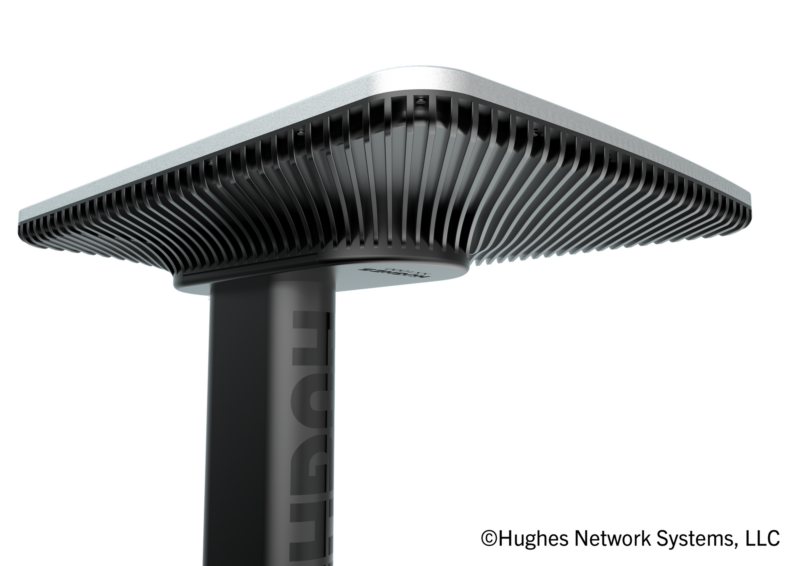Latest News

Hughes Network Systems’ flat panel antenna engineered for OneWeb LEO connectivity services. The phased array was designed for fixed and mobile connectivity.
Multi-mode data connectivity took a step closer to reality Monday, when Hughes Network Systems unveiled two new ground terminals at SATELLITE 2022. One integrates cellular 4G LTE signals with those from Hughes’ Geostationary (GEO) Jupiter constellation into a single, high throughput, low latency broadband internet for consumers. The other uses an electronically steerable, flat-panel antenna to deliver connectivity from OneWeb’s growing Low-Earth Orbit (LEO) constellation.
The consumer broadband terminal uses Hughes “smart network” technology, said Paul Gaske, executive vice president and general manager of Hughes’ North America division. The company’s Active Comms Ecosystem, or ACE, routes individual packets depending on their requirements, through either the LTE network for applications requiring low latency, or through the Jupiter 2 satellite for those requiring high throughput.
This is part of Hughes’ commitment to connect underserved communities at the very edge of cellular coverage, Gaske said. “The reduced signal levels that occur out there in our markets are just fine,” he explained, “We just want to get some quick packets through.”
The hybrid service will be offered to consumers in select U.S. markets later this year, the company said in a statement.
The OneWeb antenna is designed to seamlessly hand off signals from one satellite to the next every three minutes, said John Corrigan, senior vice president at Hughes. He said the antenna provided LEO connectivity at speeds of 190 Mbps down and 20 Mbps up; and also delivered average round trip latency “in the low 50 milliseconds or so.”
The demonstrations “are proof positive of our continued engineering leadership on the path to an integrated, worldwide ecosystem of terrestrial and multi-orbit satellite connectivity,” said Hughes President and CEO Pradman Kaul.
Get the latest Via Satellite news!
Subscribe Now